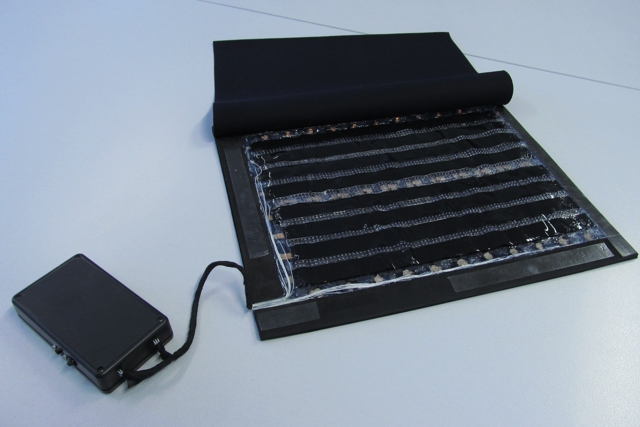The flexible and stretchable dielectric silicone sensors (DES) can be excellently integrated into textiles. Sensor size, arrangement and number are freely adjustable and thus make it possible to realize an individual measuring surface with a high spatial resolution.
Special advantages are the softness, low thickness (approx. 2 mm) and high elasticity of the arrangement, which means that even strongly curved surfaces can be covered with sensor arrays.
The measured pressure values are evaluated electronically and can be transmitted wirelessly via Bluetooth.
